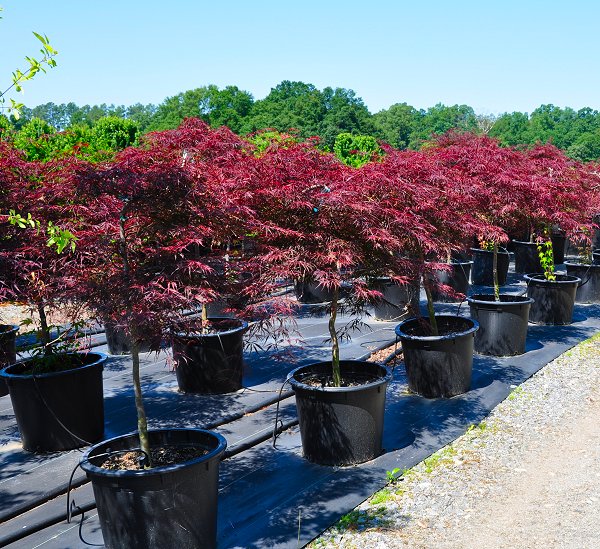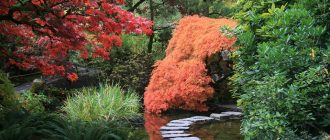Ever heard of a spiritual maple tree? Find out why the Tamakeyama is considered as a spiritual tree and an amazing aesthetic enhancer.
The Tamukeyama is one amongst the many specimens of the Japanese maple family. The botanical name Acer Palmatum dissectum forma astropurpureum Tamukeyama means that this particular breed is either a threadleaf, laceleaf, cutleaf or split leaf Japanese maple. The term astropurpureum denotes that the leaves of the tree turn purple. Tamukyama is obviously the name of the cultivar.
The specimen gets its name from the famous mountain Tamukeya situated in Kyushu. The mountain is famous for having a shrine of a famous Japanese warrior in history recalled as Musahi Miyamoto.
The unique name of the maple tree actually means “hands folded in prayer upon the mountain. The term tamuke is usually used for spiritual offerings and acts. The Zen Buddhists were particularly familiar with this term as it was part of their daily practices.
The Tamukyama maple tree comes into its form near autumn season. This is the season when it starts to sport its amazingly bright red leaves. The red leaves come as a prelude to a freezing cold winter that is soon to follow. The shade of these autumn maples is taken as a meditative spot by those under the influence of Zen Buddhism. The takukyama is one of those trees that make you want to get one with nature.
The tamukeyama grows best in a partially shaded environment. Constant exposure to direct sunlight may pose certain health risks to the tree. When it comes to the upright variety of Japanese maples the tamukeyama is definitely on the top of the list. It grows in a semi weeping style and has a decent spread.
The impressive tree is a rather slow grower as it could take up to ten years to reach a height of six to eight feet. It can expand up to ten feet on the horizon at its zenith. There are examples in nature of tamukeyama maple trees that have been left to grow in the wild and reached a height of about 25 feet.
Around the month of April you will find the tamukeyama to be sporting purple leaves. The progressive season will bring a transition in the colour of the leaves from purple towards burgundy and maroon. When the summer season ends and the autumn season begins the leaves come in to their bright red mode.
In terms of its heat hardiness the tamukeyama is considered to be tougher than most of its cousins especially others in the cutleaf form. Hence the tamukeyama can be trusted to retain its colour even when it is blazing hot and through the season of drought.
The fact that the tamukeyama is colour fast even during the summers is one of the reasons why it is never displaced by any new cultivars. Unlike other laceleaf varieties the takeyama is not one to be easily scorched by the heat of the sun or lack of water. This resilient tree makes an excellent addition to any garden whether Japanese style or not.





